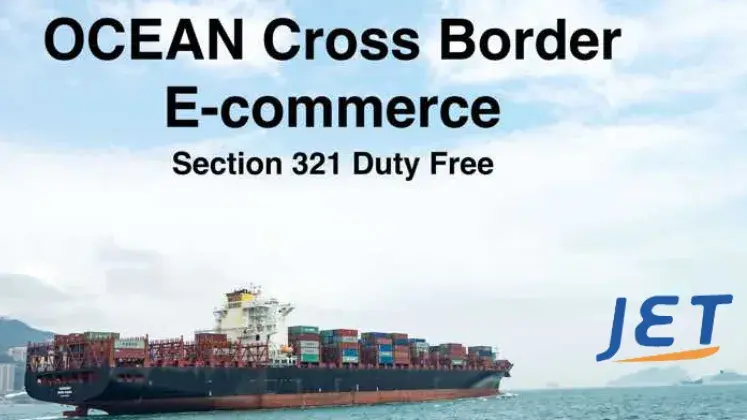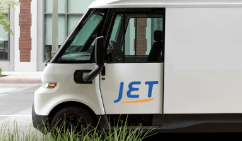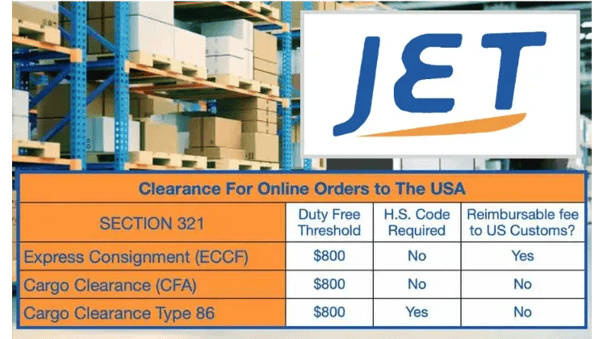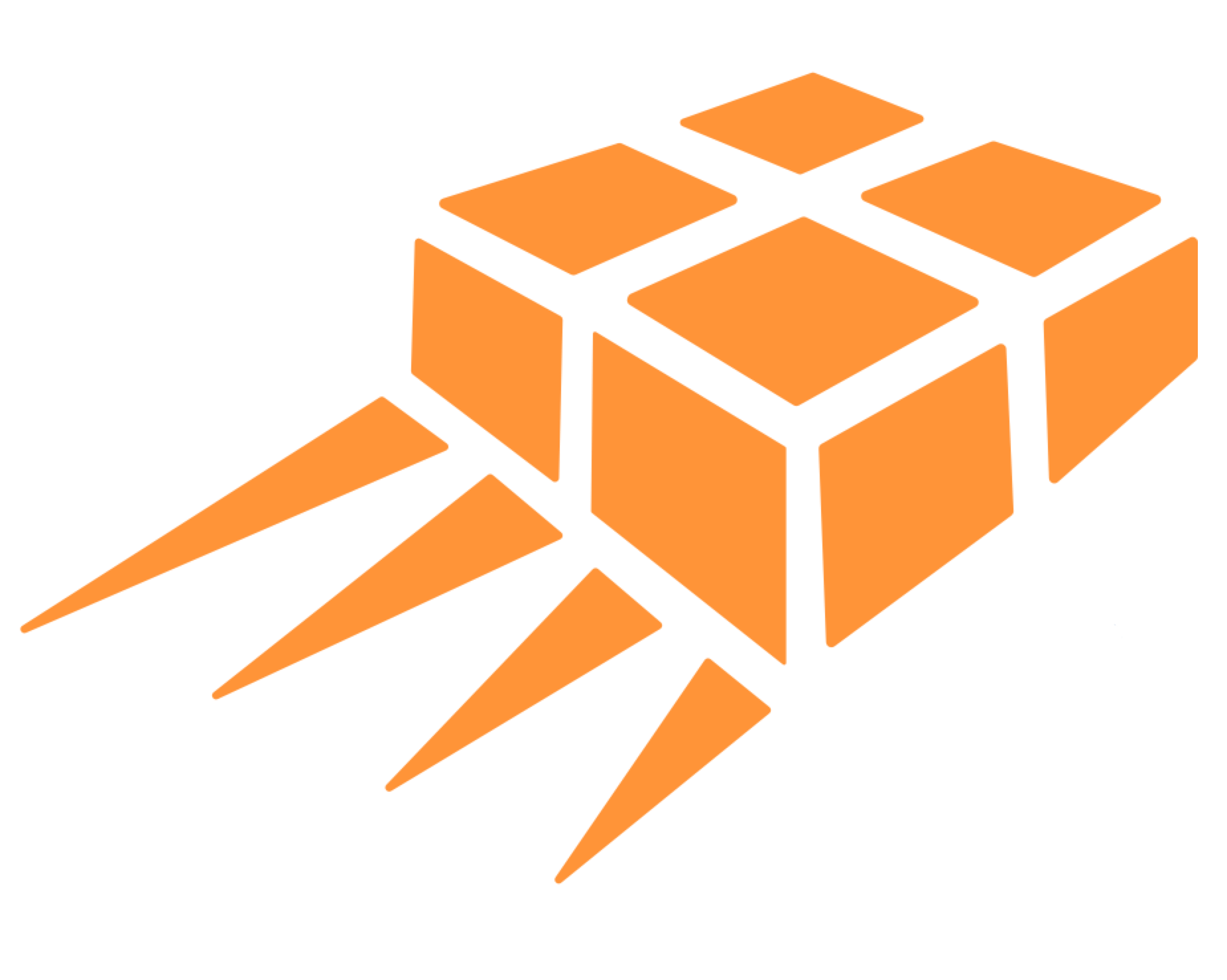
Speed Versus Cost for USA Parcel Import of Online Orders
Speed Versus Cost: Best practices for E-Commerce Imports to the USA. Dependable low cost parcel logistics supply chains rely on multiple processes including express clearance (ECCF), cargo parcel import (CFS), single importer of record (Section 321 type 86), and Canadian cross border solutions.
E-commerce companies sending to the USA are incredible pressure to deliver on time with the lowest cost possible. Most often, shipping is a cost that has to absorbed by the e-commerce merchant.
New low value entry processes to the USA are possible for online orders valued under $800 USD via section 321 type 86 entries and section 321 type 11 entries for express/ ECCF clearance.

Disclaimer: The information in all Jet Worldwide online content, including this post, is for general information only and is not intended to, constitute legal and/or tax advice. All liability with respect to actions taken or not taken based on the contents of this site are hereby expressly disclaimed. The content on this posting is provided “as is”; no representations are made that the content is error-free.
While cost in important International e-commerce companies can exist only if they find ways to offer consistent affordable delivery solutions in a reasonable time frame. For many e-commerce companies, the choice heretofore has been limited between:
- Low cost, time indefinite postal delivery
- High cost, time definite integrator delivery
As e-commerce volumes have grown, so has interest in hybrid solutions that combine the speed of airfreight with local ground networks.
As the volumes of e-commerce parcels grow, volume e-commerce specialists are utilizing multiple points of entry and duty free parcel import to the USA
Using Section 321 type 86 entries, e-commerce merchants can clear e-commerce orders shipped via individual parcels via ocean freight. Contact our team for information on clearing ocean freight shipments via duty free section 321 processes.

In sending directly to these ports of entry, e-commerce parcels from China to the USA - for example - could be delivered within 3 days for the vast majority the American and European e-commerce consumers. Sending direct gives access to next day ground delivery networks within each region to major population groups. The various ports can also be set up to handle the returns.
The challenge in sending to multiple ports is the upfront cost of developing unique processes for each point of entry. However, at least for e-commerce parcels to the USA, the additional cost is minimal. The main obstacle for sending high volume parcel flows to the USA is having the necessary volumes. This is especially true for Asian e-commerce companies.
Having multiple ports of entry work to balance the flows and minimize critical choke points that all high volume parcel shippers to the USA have experienced within the postal clearance networks. This is especially true during the critical holiday season. To some USA ports of entry, there are also alternative clearance channels (Express Consignment Clearance Facilities and Container Freight Stations).
Although the processes can seem complex, e-commerce parcels to the USA can be managed by controlling variables to verifying the integrity of the processes.
- Ensuring integrity of the parcels with respect to trademarks
- Pre-payment of duty and value added tax
- Full data integration
The leading last mile solution in the USA remains the USPS. In addition to the postal services, there are regional specialists that compete for low cost ground delivery.
Contact Jet to Ship to the USA via Canada
Contact our North American logistics team for information on Canada to USA cross border shipping.
Cost Versus Time across all logistics:
It is worth noting that e-commerce companies are not alone in their search for lower cost alternatives. Across all supply chains, cost is increasingly taking priority over time.
The shift to lower cost delivery options can be seen in the comments following the integrator's recent financial results:
- UPS and FedEx are experiencing “increasing customer preference for lower-yielding shipping solutions.”
- USPS is selling direct to on-line sellers in Europe, Asia and South America.
The growth of cross border international e-commerce business is a natural outgrowth of globalization. The point of sale continues to shift from the local retailer to regional and international e-commerce. In Canada and the USA, international online sales are finding a way to achieve a lower cost by shipping direct airfreight.
Shipping online orders to Canada and USA

Despite NAFTA / USMCA and huge cross border trading volume, the USA and Canada maintain distinct differences for importing online ordered imports. Jet Worldwide assists companies who need a solution to Canada as well as the USA for high volume parcel imports.
- Postal Facilities (airfreight via postal clearance processes only)
-
DHL, FedEx, UPS Express hubs including Memphis, Newark, Louisville
-
Independent ECCF facilities in Los Angeles, Miami, New York and Chicago
-
Cargo clearance (CFS) facilities at major airport gateway facilities
-
Border crossing from Canada (airfreighted to Canada and trucked to the border) and Mexico

jetworldwide.com





